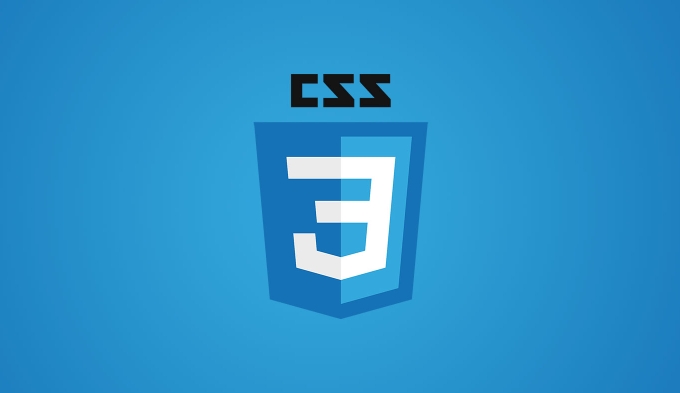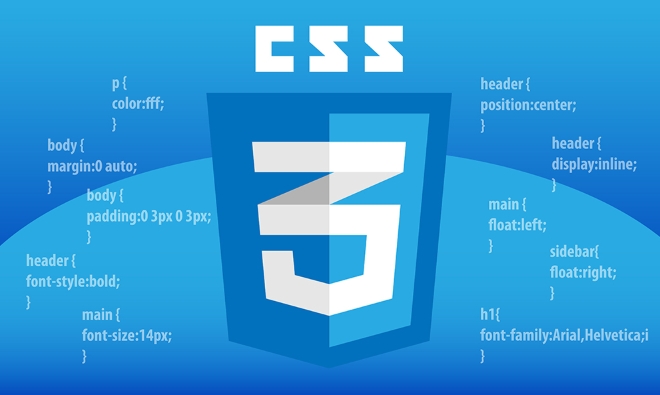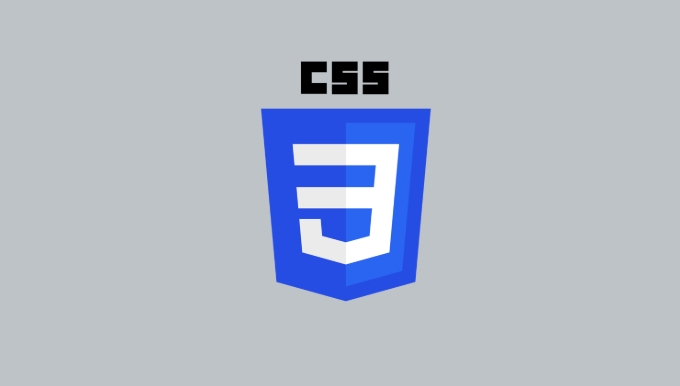BEM and SMACSS are two structured CSS methods that are suitable for different project requirements. BEM (Block Element Modifier) uses naming rules to clarify component relationships, solve class name conflicts, maintenance difficulties and other problems, and is suitable for component libraries or modular projects; SMACSS (Scalable and Modular Architecture for CSS) structurally divides styles into Base, Layout, Module, State and Theme, which is suitable for hierarchical management of large websites. The two can be used in combination, and the key is to maintain consistency, avoid over-necking, rationalize the use of tools and provide training documents to improve code maintainability and team collaboration efficiency.

Writing CSS may seem simple, but as the project grows bigger, it is easy to get out of control when maintaining it. At this time, it becomes necessary to use a structured method. BEM and SMACSS are two more popular ways of organizing CSS. They are not frameworks, but more like "behavioral norms" when writing styles. They can help you make the code clearer and easier to maintain.

What is BEM and what problems does it solve?
The full name of BEM is Block Element Modifier, and its core idea is to express the relationship between components through naming rules.

For example, you have a button component:
.btn {}
.btn--primary {}
.btn__text {}-
.btnis Block (block) -
.btn__textis an Element (element), which belongs to btn -
.btn--primaryis a Modifier (modifier), representing a variant of btn
The benefits of writing this way are obvious:

- You can tell which module it belongs to at a glance, and it is not easy to conflict
- It is easier to locate relevant parts after changing styles in the later stage
- When teamwork, the style is unified and there will be no variety of naming methods.
But it should be noted that the naming of BEM will be a little lengthy, and if your project is not big or pursues a minimalist style, it may not be suitable.
How does SMACSS organize styles?
SMACSS is the full name Scalable and Modular Architecture for CSS. It does not focus on naming specifications like BEM, but divides CSS into several categories from the overall structure:
- Base : basic styles, such as
body,input, andadefault style reset - Layout : Layout style, controls page structure, such as header, footer, grid layout
- Module : a reusable module, that is, components, such as buttons, cards, etc.
- State : State class, used to describe the performance of a module in different states, such as
.is-activeand.is-hidden - Theme : Theme-related styles (this part is less used in actual projects)
This classification method is more suitable for large websites or long-term maintenance projects, and can help you better plan the level and scope of responsibilities of CSS.
How to choose? BEM or SMACSS?
In fact, there is no standard answer to this question, the key depends on your project type and team habits.
- If you are doing component libraries, design systems, or need a highly modular structure, BEM is more suitable because it emphasizes the clear structure inside the component.
- If you are maintaining a complete website with complex layouts and multiple state changes, SMACSS is classified more organized .
Of course, it can also be used in combination, such as using SMACSS to divide the overall structure, and using BEM naming method at the component layer, which is both clear and flexible.
Some tips in practice
- Maintaining consistency is the most important thing : no matter which method it is, the key is that the whole project must be unified in style, otherwise it will add to chaos.
- Avoid over-necking : Even if you use a structured method, be careful not to write too deep nesting, as it will affect performance and readability.
- Reasonable use tools : Tools like Sass or PostCSS can help you organize your structure more easily, such as automatically merging duplicate classes, generating namespaces, etc.
- Training documents for newcomers : If you decide to adopt a certain method, it is best to have a simple instructional document so that new members can get started quickly.
Basically that's it. Structured CSS is not to show off your skills, but to make the code you write easier to understand by yourself or others. Choose the right method and stick to it, and the effect will naturally be reflected.
The above is the detailed content of Structuring CSS with methodologies like BEM or SMACSS. For more information, please follow other related articles on the PHP Chinese website!

Hot AI Tools

Undress AI Tool
Undress images for free

Undresser.AI Undress
AI-powered app for creating realistic nude photos

AI Clothes Remover
Online AI tool for removing clothes from photos.

Clothoff.io
AI clothes remover

Video Face Swap
Swap faces in any video effortlessly with our completely free AI face swap tool!

Hot Article

Hot Tools

Notepad++7.3.1
Easy-to-use and free code editor

SublimeText3 Chinese version
Chinese version, very easy to use

Zend Studio 13.0.1
Powerful PHP integrated development environment

Dreamweaver CS6
Visual web development tools

SublimeText3 Mac version
God-level code editing software (SublimeText3)
 CSS tutorial for creating loading spinners and animations
Jul 07, 2025 am 12:07 AM
CSS tutorial for creating loading spinners and animations
Jul 07, 2025 am 12:07 AM
There are three ways to create a CSS loading rotator: 1. Use the basic rotator of borders to achieve simple animation through HTML and CSS; 2. Use a custom rotator of multiple points to achieve the jump effect through different delay times; 3. Add a rotator in the button and switch classes through JavaScript to display the loading status. Each approach emphasizes the importance of design details such as color, size, accessibility and performance optimization to enhance the user experience.
 Addressing CSS Browser Compatibility issues and prefixes
Jul 07, 2025 am 01:44 AM
Addressing CSS Browser Compatibility issues and prefixes
Jul 07, 2025 am 01:44 AM
To deal with CSS browser compatibility and prefix issues, you need to understand the differences in browser support and use vendor prefixes reasonably. 1. Understand common problems such as Flexbox and Grid support, position:sticky invalid, and animation performance is different; 2. Check CanIuse confirmation feature support status; 3. Correctly use -webkit-, -moz-, -ms-, -o- and other manufacturer prefixes; 4. It is recommended to use Autoprefixer to automatically add prefixes; 5. Install PostCSS and configure browserslist to specify the target browser; 6. Automatically handle compatibility during construction; 7. Modernizr detection features can be used for old projects; 8. No need to pursue consistency of all browsers,
 Creating custom shapes with css clip-path
Jul 09, 2025 am 01:29 AM
Creating custom shapes with css clip-path
Jul 09, 2025 am 01:29 AM
Use the clip-path attribute of CSS to crop elements into custom shapes, such as triangles, circular notches, polygons, etc., without relying on pictures or SVGs. Its advantages include: 1. Supports a variety of basic shapes such as circle, ellipse, polygon, etc.; 2. Responsive adjustment and adaptable to mobile terminals; 3. Easy to animation, and can be combined with hover or JavaScript to achieve dynamic effects; 4. It does not affect the layout flow, and only crops the display area. Common usages are such as circular clip-path:circle (50pxatcenter) and triangle clip-path:polygon (50%0%, 100 0%, 0 0%). Notice
 What is the difference between display: inline, display: block, and display: inline-block?
Jul 11, 2025 am 03:25 AM
What is the difference between display: inline, display: block, and display: inline-block?
Jul 11, 2025 am 03:25 AM
Themaindifferencesbetweendisplay:inline,block,andinline-blockinHTML/CSSarelayoutbehavior,spaceusage,andstylingcontrol.1.Inlineelementsflowwithtext,don’tstartonnewlines,ignorewidth/height,andonlyapplyhorizontalpadding/margins—idealforinlinetextstyling
 Styling visited links differently with CSS
Jul 11, 2025 am 03:26 AM
Styling visited links differently with CSS
Jul 11, 2025 am 03:26 AM
Setting the style of links you have visited can improve the user experience, especially in content-intensive websites to help users navigate better. 1. Use CSS's: visited pseudo-class to define the style of the visited link, such as color changes; 2. Note that the browser only allows modification of some attributes due to privacy restrictions; 3. The color selection should be coordinated with the overall style to avoid abruptness; 4. The mobile terminal may not display this effect, and it is recommended to combine it with other visual prompts such as icon auxiliary logos.
 How to create responsive images using CSS?
Jul 15, 2025 am 01:10 AM
How to create responsive images using CSS?
Jul 15, 2025 am 01:10 AM
To create responsive images using CSS, it can be mainly achieved through the following methods: 1. Use max-width:100% and height:auto to allow the image to adapt to the container width while maintaining the proportion; 2. Use HTML's srcset and sizes attributes to intelligently load the image sources adapted to different screens; 3. Use object-fit and object-position to control image cropping and focus display. Together, these methods ensure that the images are presented clearly and beautifully on different devices.
 Demystifying CSS Units: px, em, rem, vw, vh comparisons
Jul 08, 2025 am 02:16 AM
Demystifying CSS Units: px, em, rem, vw, vh comparisons
Jul 08, 2025 am 02:16 AM
The choice of CSS units depends on design requirements and responsive requirements. 1.px is used for fixed size, suitable for precise control but lack of elasticity; 2.em is a relative unit, which is easily caused by the influence of the parent element, while rem is more stable based on the root element and is suitable for global scaling; 3.vw/vh is based on the viewport size, suitable for responsive design, but attention should be paid to the performance under extreme screens; 4. When choosing, it should be determined based on whether responsive adjustments, element hierarchy relationships and viewport dependence. Reasonable use can improve layout flexibility and maintenance.
 What are common CSS browser inconsistencies?
Jul 26, 2025 am 07:04 AM
What are common CSS browser inconsistencies?
Jul 26, 2025 am 07:04 AM
Different browsers have differences in CSS parsing, resulting in inconsistent display effects, mainly including the default style difference, box model calculation method, Flexbox and Grid layout support level, and inconsistent behavior of certain CSS attributes. 1. The default style processing is inconsistent. The solution is to use CSSReset or Normalize.css to unify the initial style; 2. The box model calculation method of the old version of IE is different. It is recommended to use box-sizing:border-box in a unified manner; 3. Flexbox and Grid perform differently in edge cases or in old versions. More tests and use Autoprefixer; 4. Some CSS attribute behaviors are inconsistent. CanIuse must be consulted and downgraded.






